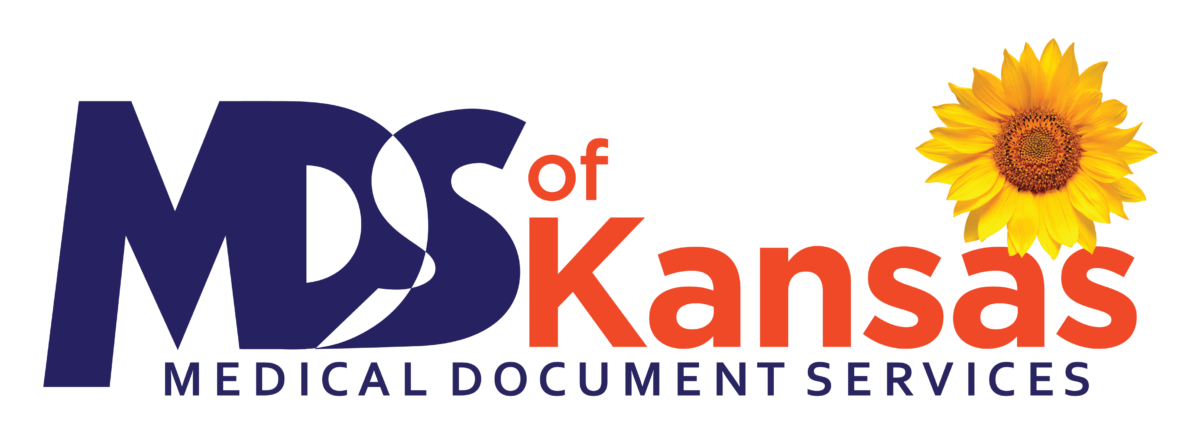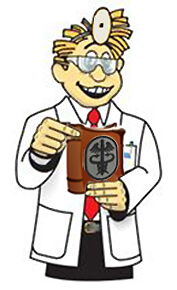By Dr. Mercola
Most everyone, including many conventional physicians, have begun to appreciate the importance and value of vitamin D. Few, however, recognize the importance of vitamin K2, which is nearly as important as vitamin D.
Dr. Dennis Goodman,1 who was born in South Africa and trained at the University of Cape Town, has multiple board certifications in cardiology (and several subspecialties) and holistic integrative medicine.
After his internship at the Grootte Schuur Hospital—where Dr. Christian Barnard did the first heart transplant in 1967—he came to the US, where he did his cardiology fellowship at the at the Baylor College of Medicine in Houston, where Dr. Michael DeBakey performed the first bypass surgery.
“I was really very lucky to be in a situation where I had these two cardiac giants as mentors and teachers,” he says.
Dr. Goodman is also the chairman of the Department of Integrative Medicine at the New York University (NYU), and has authored the book, Vitamin K2: The Missing Nutrient for Heart and Bone Health. In it, he explains why vitamin K2 isevery bit as important as vitamin D.
“For 20 years I was putting stents in; running around day and night at the hospital. When I got called to the emergency room for someone having a heart attack, I was like a fireman putting out a fire in a house.
Sometimes, you were very lucky and could save the house from burning down, and sometimes not.
What I started to realize is that prevention is really the key for us to making the maximum impact. I’ve always been interested in the idea that everything we need to be healthy is provided by the Lord above –namely what’s out there for us to eat.
80 percent of these chronic diseases including atherosclerosis, heart attacks and strokes, diabetes, and obesity are preventable. So I got into the whole idea of learning integrative medicine,” he says.
He was the chief of cardiology at Scripps Memorial, and went on to Scripps Clinic for Integrative Medicine for many years.
“Obviously, when you understand holistic medicine, you understand that so much of what we’re doing, unfortunately, in traditional medicine is procedures, testing, and prescribing drugs, because that’s what we’re taught—and making diagnoses instead of taking care of people who basically may not have a disease, but are not healthy and well.”
As a cardiologist, it’s quite appropriate to delve into vitamin K2, as it has two crucial functions: one is in cardiovascular health and the other is in bone restoration.
It performs many other functions as well, but by helping remove calcium from the lining of the blood vessels, vitamin K2 helps prevent occlusions from atherosclerosis.
Vitamin K Basics
Vitamins K1 and K2 are part of a family, but they are very different in their activity and function. Vitamin K1, found in green leafy vegetables, is a fat-soluble vitamin involved in the production of coagulation factors, which are critical for stopping bleeding.
This is why when someone’s on a blood thinner such as warfarin, they need to be careful not to take too much vitamin K1, as it will antagonize the effect of drug. Vitamin K2 is very different. There’s a complex biochemistry that occurs with K2 involving two enzymes:
- Matrix Gla-protein (MGP)
- Osteocalcin
“Gla” is short for glutamic acid. Glutamic acid is imported into the cells in the wall of your arteries, where it binds to calcium and removes it from the lining of your blood vessels.
Once removed from your blood vessel lining, vitamin K2 then facilitates the intergration of that calcium into your bone matrix by handing it over to osteocalcin,. The osteocalcin then helps cement the calcium in place.
Vitamin K2 activates these two proteins. Without it, this transfer process of calcium from your arteries to your bone cannot occur, which raises your risk of arterial calcification.
“Vitamin K2 is like a light switch—it switches on MGP and osteocalcin, which takes calcium out of the arterial wall and keeps it in the bone.
There’s so much information showing this relationship between osteoporosis (not having enough calcium in your bones) and having an increased incidence of heart disease. What’s actually happening, I think, a lot of patients are vitamin K2-deficient,” Dr. Goodman says.
“So now, I tell all patients – especially when they have risk factors for calcification – ‘You’ve got to get vitamin K2 when you take your vitamin D, and your calcium, and magnesium.’ Because we need to make sure that the calcium is going where it’s supposed to go.”
Statins May Increase Arterial Calcification by Depleting Vitamin K2
Besides a vitamin K2-poor diet, certain drugs may affect your vitamin K2 status. Dr. Goodman cites a recent article2 in the Journal of the American College of Cardiology, which suggests statin drugs may increase calcification in the arteries.
Interestingly enough, another recent study3 published in the Expert Review of Clinical Pharmacology shows that statins deplete vitamin K2.
“For me, that is so huge because if that’s true, everybody that is put on a statin, you want to make sure they’re also taking vitamin K2,” Dr. Goodman says.
This is an important observation, considering one in four adults in the US over the age of 40 is on a statin drug. Not only do all of these people need to take a ubiquinol or coenzyme Q10, which is also depleted by the drug, it’s quite likely they also need vitamin K2 to avoid cardiovascular harm.
Sources of Vitamin K2
Vitamin K2 is produced by certain bacteria, so the primary food source of vitamin K2 is fermented foods such as natto, a fermented soy product typically sold in Asian grocery stores. Fermented vegetables can be a great source of vitamin K if you ferment your own using a specially-designed starter culture. My Kinetic Culture is high in strains that make vitamin K2. If you would like to learn more about making your own fermented vegetables with a starter culture, you can watch the video and read more on this page.
Please note that not every strain of bacteria makes K2, so not all fermented foods will contain it. For example, most yogurts have almost no vitamin K2. Certain types of cheeses, such as Gouda, Brie, and Edam, are high in K2, while others are not. It really depends on the specific bacteria. Still, it’s quite difficult to get enough vitamin K2 from your diet—especially if you do not eat K2-rich fermented foods—so taking a supplement may be a wise move for most people.
How Can You Tell if You’re Deficient in Vitamin K2?
The major problem we face when it comes to optimizing vitamin K2 is that, unlike vitamin D, there’s no easy way to screen or test for vitamin K2 sufficiency. Vitamin K2 cannot at present be measured directly, so it’s measured through an indirect assessment of undercarboxylated osteocalcin. This test is still not commercially available, however. “That’s our problem. If that was available, we could start testing and showing people that their levels are low,” Dr. Goodman says.
Without testing, we’re left with looking at various lifestyle factors that predispose you to deficiency. As a general rule, if you have any of the following health conditions, you’re likely deficient in vitamin K2:
That said, it’s believed that the vast majority of people are in fact deficient these days and would benefit from more K2. One reason for this is very few (Americans in particular) eat enough vitamin K2-rich foods. So, if you do not have any of the health conditions listed, but do NOT regularly eat high amounts of the following foods, then your likelihood of being vitamin K2 deficient is still very high:
- Certain fermented foods such as natto, or vegetables fermented using a starter culture of vitamin K2-producing bacteria
- Certain cheeses such as Brie and Gouda (these two are particularly high in K2, containing about 75 mcg per ounce)
- Grass-fed organic animal products (i.e. egg yolks, butter, dairy)
Different Kinds of Vitamin K2
The vitamin K puzzle is even more complex than differentiating between K1 and K2. There are also several different forms of vitamin K2. The two primary ones—and the only ones available in supplement form—are menaquinone-4 (MK-4) and menaquinone-7 (MK-7). MK-4 has a very short biological half-life—about one hour—making it a poor candidate as a dietary supplement. MK-7 stays in your body longer; its half-life is three days, meaning you have a much better chance of building up a consistent blood level, compared to MK-4.
In supplement form, the MK-4 products are actually synthetic. They are not derived from natural food products containing MK-4. The MK-7– long-chain, natural bacterial-derived vitamin K2– on the other hand comes from a fermentation process, which offers a number of health advantages.
Research4 has shown MK-7 also helps prevent inflammation by inhibiting pro-inflammatory markers produced by white blood cells called monocytes. MK-7 is extracted from the Japanese fermented soy product natto, and since it’s longer lasting, you only need to take it once a day. With an MK-4 supplement, you need to take it three times a day. The duration of action is also much longer with MK-7.
As for a clinically useful dosage, some studies have shown as little as 45 micrograms per day is sufficient. Dr. Goodman recommends taking 180 micrograms per day, making sure the K2 is in the form of MK-7. If you’re eating natto, all you need is about one teaspoon.
That said, vitamin K2 is non-toxic, so you don’t need to worry about overdosing if you get more. Do keep in mind that vitamin K2 may not necessarily make you “feel better” per se. Its internal workings are such that you’re not likely to feel the difference physically. Compliance can therefore be a problem, as people are more likely to take something that has a noticeable effect. This may not happen with vitamin K2, but that certainly does not mean it’s not doing anything! Last but not least, remember to always take your vitamin K supplement with fat since it is fat-soluble and won’t be absorbed without it. Read More





 #MDSofKansas will once again be at the #KMGMA2017 Spring Conference (04/20/17) and we are looking forward to seeing YOU! Please stop by our booth and check out some of the great giveaways, and learn what we’ve been up to! We are saving many clinics and businesses lots of money on everyday fees. If you would like to save money, too, stop by and ask us how!
#MDSofKansas will once again be at the #KMGMA2017 Spring Conference (04/20/17) and we are looking forward to seeing YOU! Please stop by our booth and check out some of the great giveaways, and learn what we’ve been up to! We are saving many clinics and businesses lots of money on everyday fees. If you would like to save money, too, stop by and ask us how!






